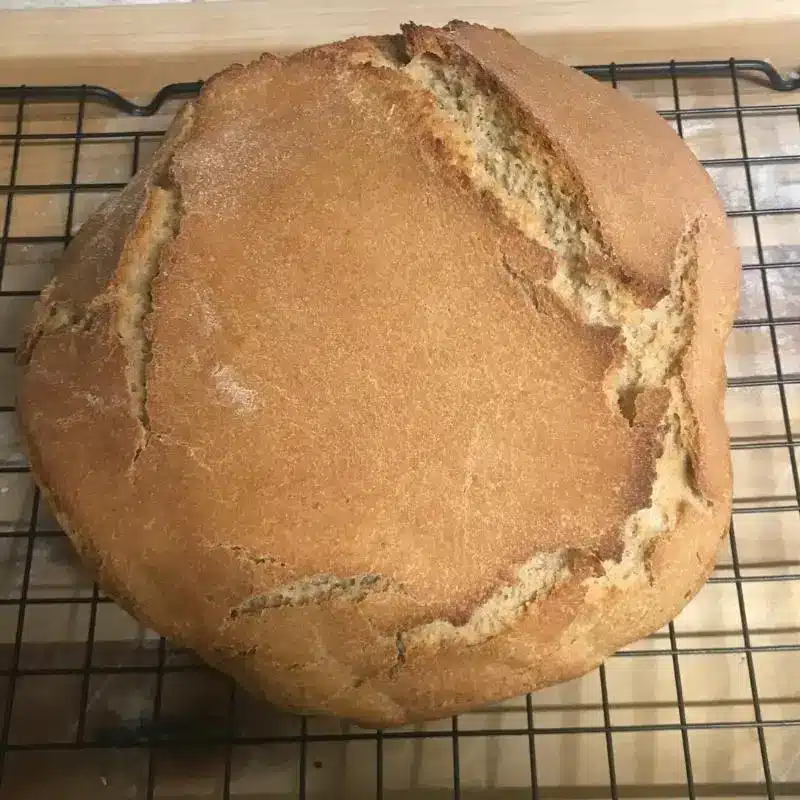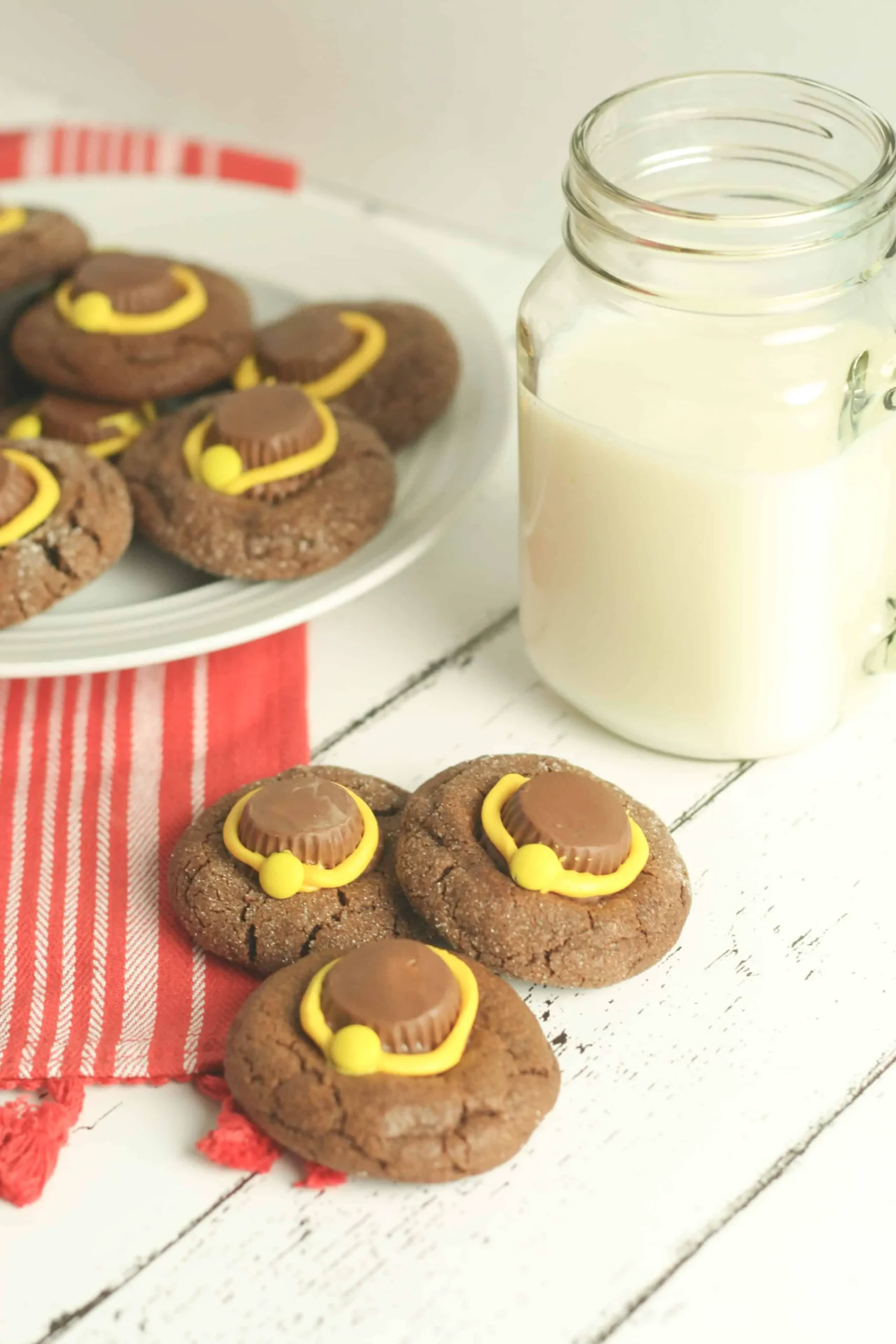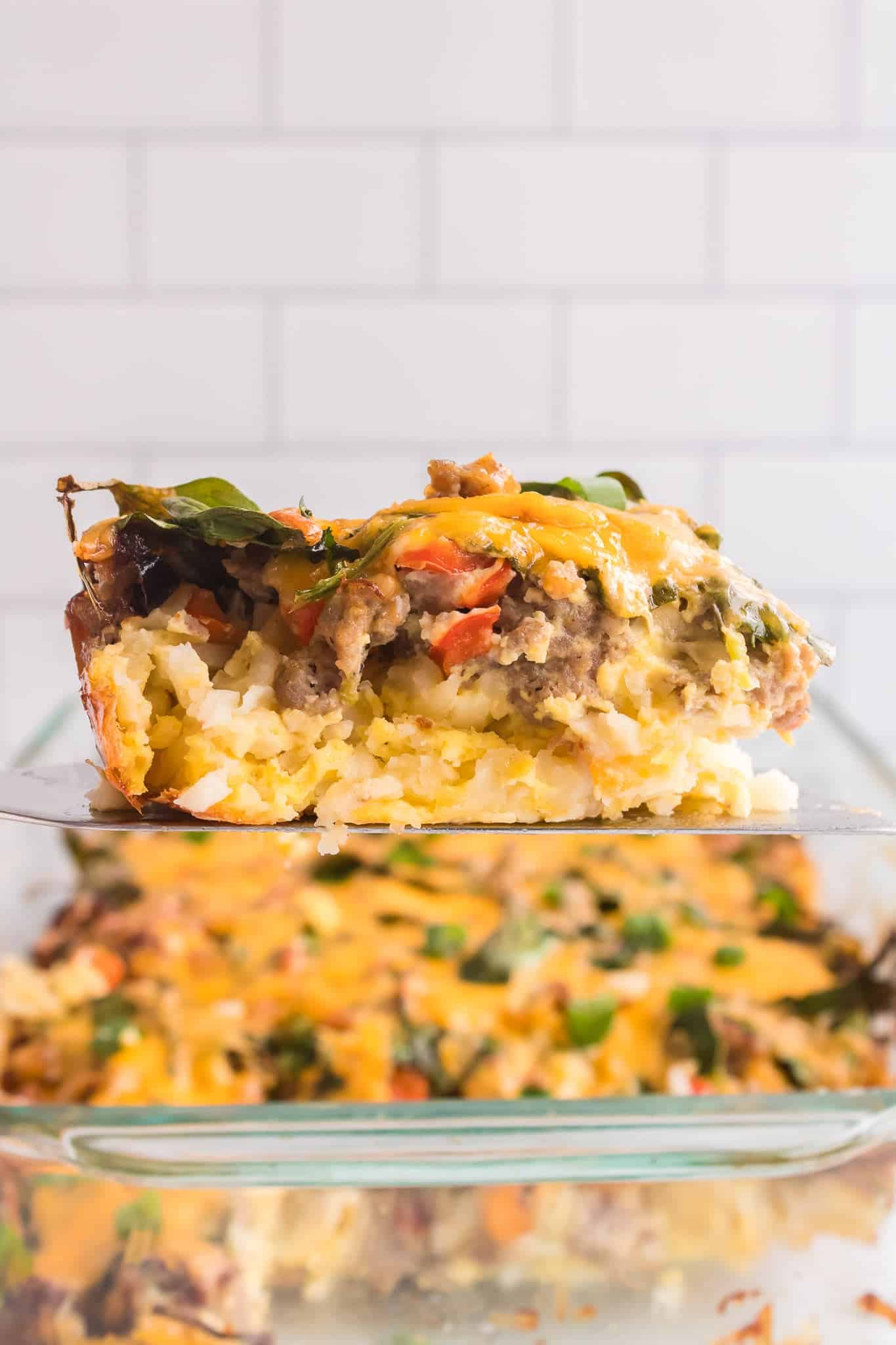No Knead Sourdough Bread

Bread is one of the most ancient and universal foods. It is also one of the simplest to make, yet there are so many different types and variations. Classic sourdough bread typically takes 12+ hours to prepare (before baking!) No-knead sourdough bread is a delicious and easy-to-make variation on the classic that takes less effort and time.
Sourdough bread has been around for centuries and is thought to have originated in ancient Egypt. It is made by combining flour, water, a “starter” (a mix of yeast and bacteria), and sometimes other ingredients. The dough is then left to ferment for several hours or days. This process gives sourdough bread its distinctive flavor and texture. Our no-knead recipe is a great way to make sourdough bread fast and without the strong sourdough flavor that some children have a hard time with.
Table of Contents
Note: This post may contain affiliate links, which means if you buy from my link I might make a small commission. This does not affect the price you pay. See the full affiliate disclosure here.
What are the benefits of Sourdough Bread?
There are several benefits of sourdough bread over other types of bread. First, the fermentation process that sourdough bread undergoes results in the bread being more easily digestible. This is because the fermentation process breaks down some of the carbohydrates and proteins in the flour, making them more readily available for absorption by the body.
Additionally, the lactic acid produced during fermentation can help to reduce the glycemic index of the bread, which is beneficial for blood sugar control.
Finally, sourdough bread has a lower phytic acid content than other types of bread. Phytic acid is a compound that binds to minerals such as calcium, iron, and zinc, making them less available for absorption by the body.

Why No-Knead Bread?
No-Knead breads are one of my favorite types of bread to make because they are fairly hands-off bread recipes. As much as I love making bread, I have a shoulder problem that flairs up at times and can make it difficult to properly knead bread, so when I came across No-Knead recipes a couple of years ago I had to try them out.
What’s great about No-Knead recipes is that they are typically really simple: Flour, water, yeast, and salt. It’s amazing that such simple ingredients can create such an amazing thing as bread.
In No-Knead recipes, you use the time to do the kneading. The longer you let it sit, the more active the yeast becomes creating air bubbles and breaking down the wheat. No-Knead typically is a bit denser than standard kneaded bread, but honestly, I feel like it’s barely noticeable in certain situations and it makes a fantastic sandwich bread.
Getting Started: What Are The Ingredients For No-Knead Bread?
As I mentioned above, No-Knead bread ingredients are super simple. You just need basic flour, water, salt, and some sort of yeast. When I first started making No-Knead bread I would use standard commercial yeast, but this year I have issued a challenge to myself to not use commercial yeast at all, and only use a sourdough starter. The challenge so far has been interesting, but certainly a blast!
Don’t have a sourdough starter? Have no fear, check out my post about how to make your own sourdough starter! You’ll be ready for all the sourdough baking within a week!

For this recipe we use the basics plus a couple of extra ingredients:
Active Sourdough Starter
Meaning it was fed within 12 hours of this. This is using wild yeast which has many different strands vs standard commercial yeast which is one strand of yeast.
Filtered Water
Specifically filtered water is important vs. regular water due to using the active sourdough starter. The filtered water makes sure that we don’t harm any of the wild yeast. Regular water is often treated and has chlorine in it which can kill some of the more sensitive wild yeast. This is typically not a problem with commercial yeast.
Flour
You can use whatever flour you prefer, however, I recommend whole wheat all-purpose flour. Fresh milled is even better if you have wheat berries and a grain mill or access to a local bakery that offers freshly milled flour. The health benefits of fresh flour used within the first 48 hours after milling is just outrageous compared to standard flour.
Salt
A fine-grain salt is good here so that it can blend into the bread better. Whatever salt is your favorite is fine to use. I personally prefer to use Redmond’s Real Salt. I feel like the flavor just surpasses other salts, plus it’s mined right here in the US.
Olive Oil
This is one of the not standard ingredients. You can make your bread without this, but I feel like the olive oil adds a beautifully rich flavor to the bread. Of course, use whatever olive oil is your favorite, but I’d recommend using a high-quality organic extra virgin olive oil.
Honey
Like olive oil, honey is also not a standard ingredient in most No-Knead bread recipes and can be left out if you want to keep it simple. However, adding honey gives the bread a slightly sweet flavor that my family loves. Feel free to use whatever honey you have on hand, but it’d be even better if you have a source of local honey. Not only does local honey have amazing health benefits but it also will be a flavor that outshines others.
The important thing for the ingredients is to make sure that you use high-quality ingredients. If you’re taking the time to make high-quality bread for your loved ones, you should allow yourself to use high-quality ingredients. I promise that if you do your taste buds and your gut will be happy!

One thing I will note before I get started with the directions: Most recipes will have you weigh out your ingredients. Yes, technically that is how you can make sure to have the most accurate results; however that’s not how bakers did it a long time ago, so I don’t concern myself with doing it now. Sometimes my loaves turn out a little different from each other, but that just gives my bread more character. Plus, that can even happen just depending on the time of year, temperature, and humidity in your house. So make sure to give yourself some slack.
Lots of people are scared to get started with bread making, but it’s a simple skill that everyone should have. Bread is typically pretty forgiving and going with a No-Knead recipe makes it even easier. So give this recipe a try today!
Need a bread slicer to help with even slices? Check out these recommendations for the best homemade bread slicers from fellow bread experts.






